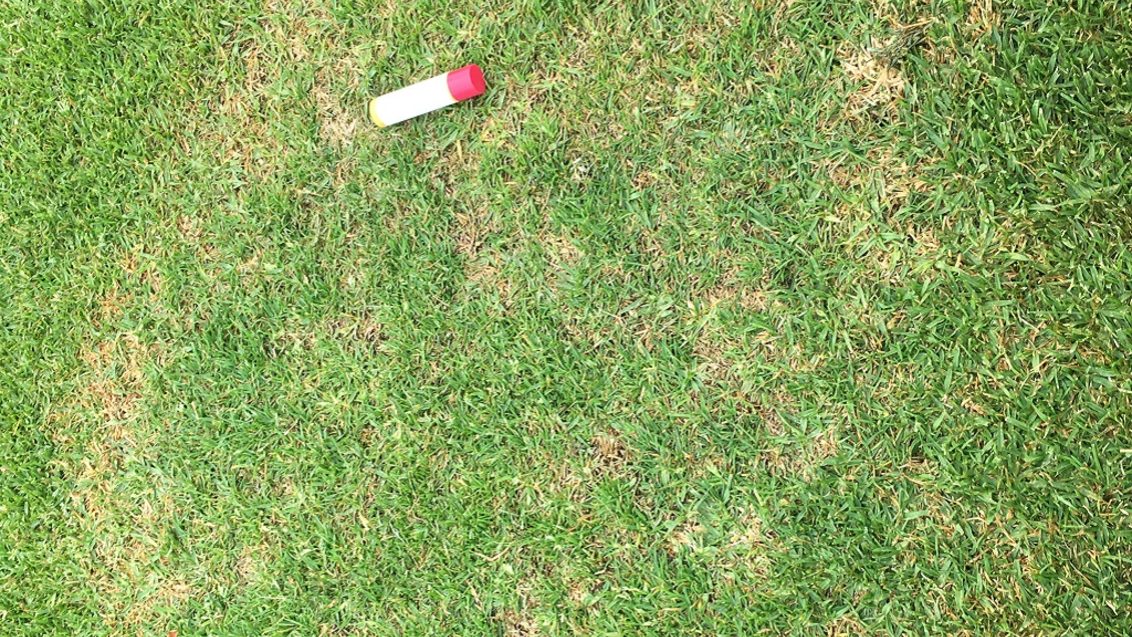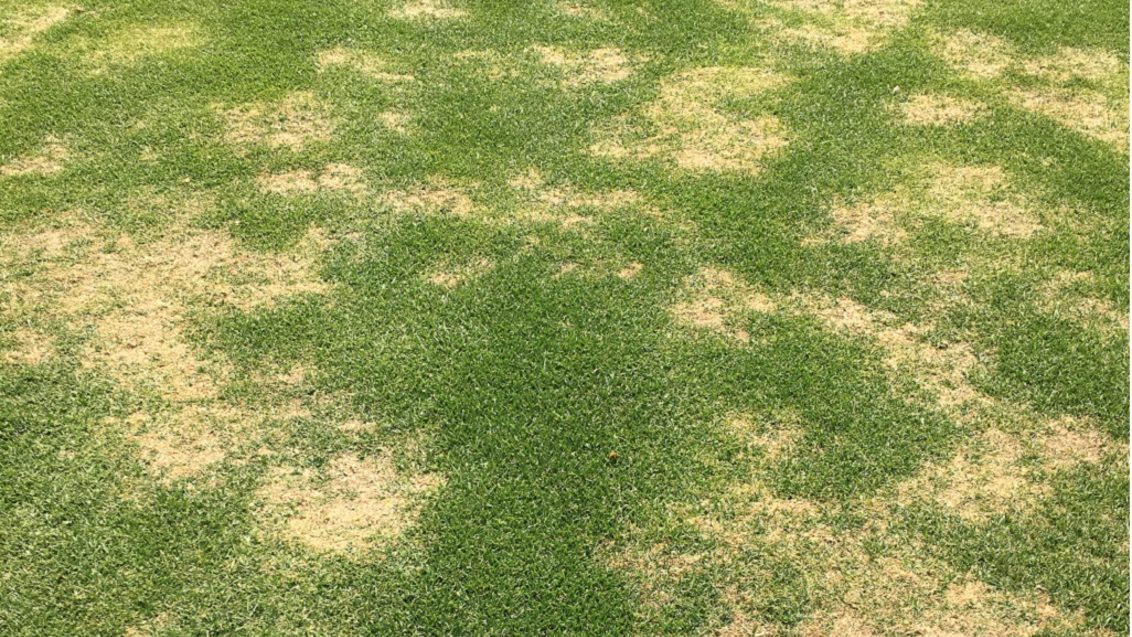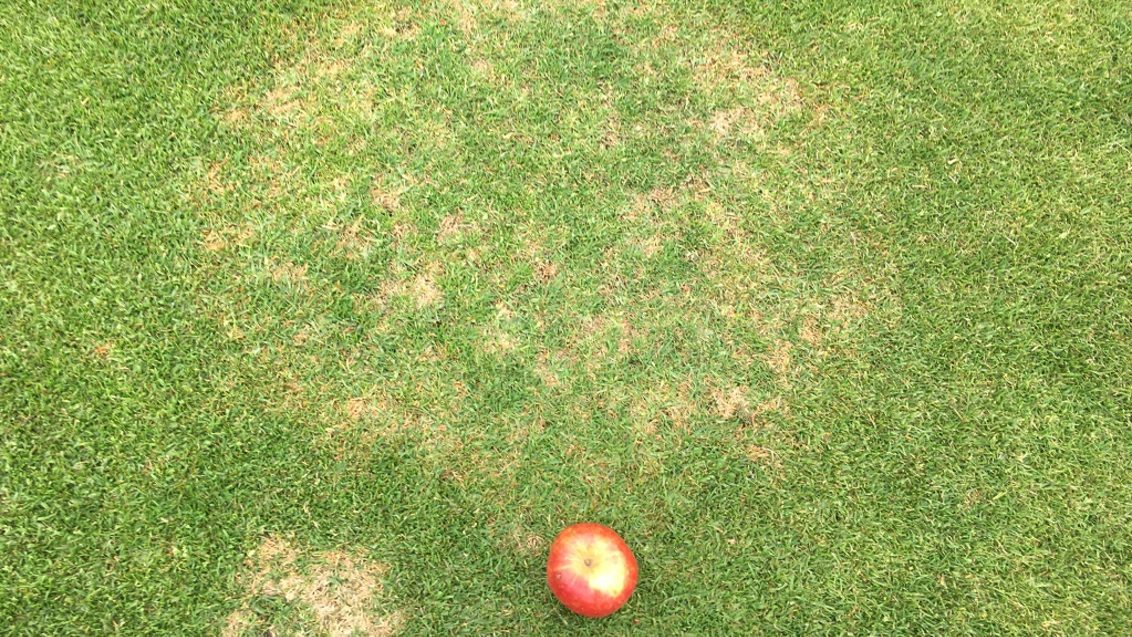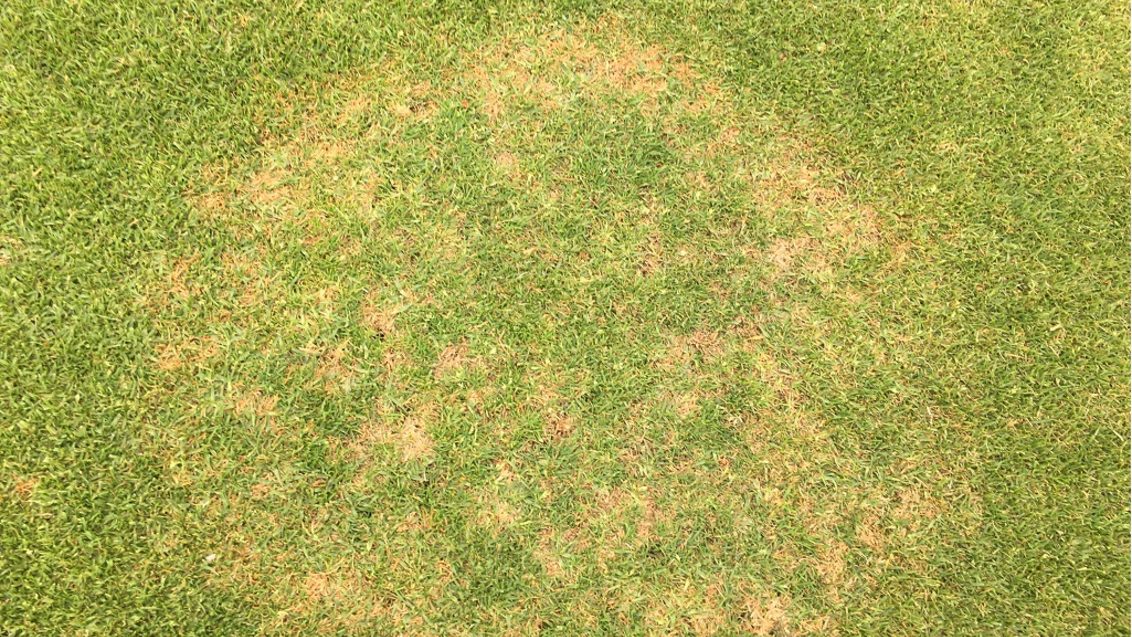Large Patch
Turf Disease
Large patch appears as rings or patches of blighted turfgrass that measure between 12 cm and 3 m across.
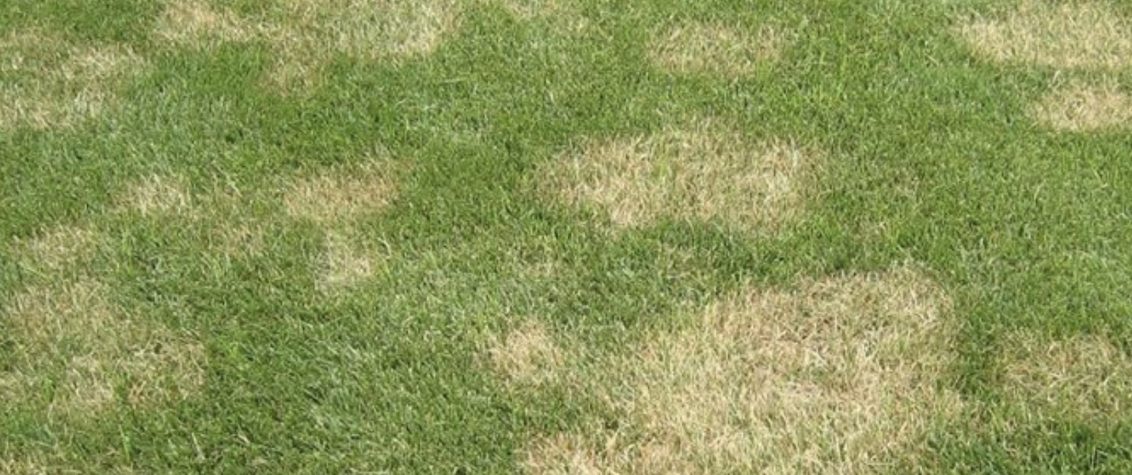
Susceptible turfgrass:
Kikuyu; seashore paspalum; zoysia grass and occasionally Bermuda grass.
Symptoms:
Large patch appears as rings or patches of blighted turfgrass that measure 12 cm to 3 m or more in diameter. Patches are brown to yellow in appearance, with a possible “orange firing” at the periphery of the patches. Small reddish-brown colored leaf spots occur on leaf sheaths, stems, and stolons. After the leaves die in the blighted area, new leaves can emerge from the surviving crowns. If the turfgrass is still green, the disease is most apparent down in the canopy, especially around the leaf sheaths as discolored/blackened lesions—when pulled lightly, these leaves detach very easily and are sometimes green above the damaged sheath.
Conditions favoring disease:
The symptoms of large patch vary depending on numerous factors such as turfgrass cultivar, climatic conditions, soil type, texture and intensity of the turfgrass management. The disease is more prevelant following extended wet periods. Large patch is more commonly found at high nitrogen levels, in heavy soils and dense thatch. In addition, large patch is enhanced by high relative humidity and overnight temperatures of 10°C - 15°C in late autumn or early spring. Infection is most likely when soil temperatures at a 5 – 10 cm depth reach 18°C. Under these conditons apply preventive fungicides.
Management Tips:
- Maintain balanced fertility.
- Avoid nitrogen applications in the late fall through early spring when the pathogen is active.
- Increase the air circulation.
- Avoid over watering.
- Improve soil drainage.
- Reduce thatch.
- Treat in March and early spring.
- 2 litres/ha Headway Maxx for fairways. Do a follow-up application 21 days later.
- Water volume 750 – 1000lt /ha water.

